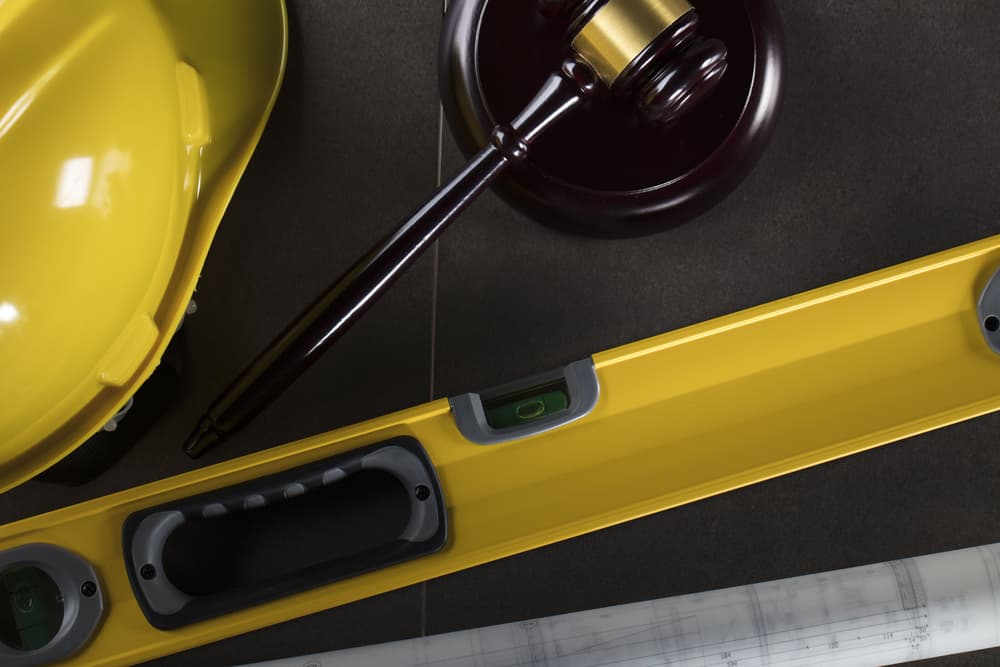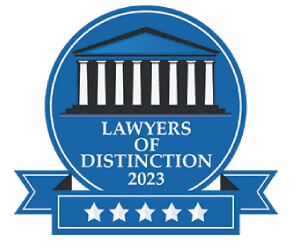Workers on construction sites are especially prone to severe injuries, most especially in fall accidents. Workers may suffer injuries if they fall from a ladder, scaffolding, or other high place. In some cases, those injuries may be permanent and may limit the individual’s ability to work in the future.
If you recently suffered injuries in a fall on a construction site, an experienced construction accident lawyer in Atlanta can help. Your attorney can meet with you to discuss the circumstances and file a workers’ compensation and/or third-party personal injury claim on your behalf. Then, your lawyer will do everything they can to pursue the maximum amount of benefits and damages available to you in your case.
How Fall Accidents May Occur on a Construction Site

Fall accidents at construction sites pose significant risks due to the nature of the work involved. One common cause is inadequate fall protection measures. Failure to implement or enforce proper safety protocols, such as guardrails, safety nets, or personal fall arrest systems, can expose workers to the risk of falling from elevated surfaces, scaffolding, or rooftops.
Unstable working surfaces also contribute to fall accidents. Uneven or slippery surfaces, poorly maintained scaffolding, or surfaces cluttered with debris can compromise the stability of the work area. Workers may lose their footing, leading to slips, trips, or falls from heights.
Improper use or faulty equipment is another significant cause of fall accidents. Defective ladders, scaffolding, or other tools can fail unexpectedly, resulting in workers losing their balance and falling.
Moreover, working near openings and edges without adequate protection can lead to falls. Whether it is unprotected sides of buildings, open floor holes, or unguarded roof edges, failing to secure these areas puts workers at risk. Without proper barriers or guardrails, individuals may inadvertently step off edges, leading to falls.
If you suffered injuries after a fall accident on a construction site, an experienced personal injury attorney can determine your legal options and advocate for you throughout your case in pursuit of the financial recovery you deserve.
Types of Injuries That Individuals May Suffer During a Fall on a Construction Site
Fall injuries on construction sites can lead to a range of severe and potentially life-altering injuries due to the significant heights involved in construction work. One common injury is fractures or broken bones resulting from the impact of the fall. Ankles, wrists, arms, and legs are particularly vulnerable, and the severity of fractures can vary depending on the height of the fall.
Traumatic head injuries are a critical concern in fall accidents. A worker who falls from an elevated surface may sustain head injuries upon impact. Traumatic brain injuries, concussions, or skull fractures can occur, posing severe risks to cognitive function and overall well-being.
Spinal cord injuries are another grave consequence of falls at construction sites. The force of impact during a fall can damage the spinal cord, leading to paralysis or other neurological impairments. The severity of spinal cord injuries depends on factors such as the height of the fall and the angle of impact.
Besides that, soft tissue injuries, such as sprains, strains, and contusions, are common in fall accidents. The sudden jolt upon landing can cause damage to muscles, ligaments, and tendons. These injuries may result in pain, swelling, and restricted mobility.
Internal injuries are a hidden risk in fall accidents. The impact of the fall can cause damage to internal organs, leading to internal bleeding, organ contusions, or other complications. These injuries may not be immediately apparent, underscoring the importance of prompt medical attention.
Workers involved in fall accidents may experience dislocations, where the force of a fall forces joints out of their normal positions. Shoulder, hip, and knee dislocations are possible, and these injuries often require medical intervention to reset the joint and alleviate pain.
In addition to physical injuries, workers may suffer emotional and psychological trauma. The fear and stress associated with a fall accident can lead to anxiety, depression, or post-traumatic stress disorder (PTSD), affecting the worker's mental health and overall well-being.
Steps to Take After Suffering Injuries in a Fall Accident
After suffering a fall injury on a construction site, workers should take several important steps beyond seeking prompt medical treatment to ensure their well-being and protect their legal rights.
First, reporting the incident immediately to a supervisor or foreman on the construction site is crucial. Prompt reporting ensures that the employer is aware of the accident and can take necessary actions to address safety concerns. In many cases, employers must document workplace injuries, and the incident report can serve as a valuable record.
Preserving evidence is essential for potential legal proceedings. If possible, the injured worker should document the scene of the accident by taking photographs or videos. This evidence can be crucial in establishing the conditions at the time of the fall, aiding in investigations and potential legal claims.
Identifying and obtaining contact information for any witnesses is also important. Eyewitness accounts can provide valuable insights into the circumstances surrounding the fall, and having their contact information can be beneficial for future legal proceedings or insurance claims.
Retaining all medical records related to the fall injury is also vital. This includes documentation of emergency room visits, hospitalizations, surgeries, diagnostic tests, and any follow-up care. These records serve as evidence of the extent and nature of the injuries sustained, which is crucial for both medical treatment and potential legal actions.
The injured worker should also promptly consult with an experienced workers' compensation attorney. Legal professionals specializing in workplace injuries can provide guidance on the appropriate steps to take and help navigate the complexities of the workers' compensation system. They can also advise on potential third-party liability claims if someone other than the employer is responsible for the fall.
Cooperating with the workers' compensation process is essential. This involves providing accurate and timely information, attending medical evaluations, and adhering to any prescribed treatments or rehabilitation plans. Failure to cooperate may jeopardize the worker's ability to receive compensation.
If the fall resulted from a hazardous condition on the construction site, the injured worker should report the unsafe condition so that management can correct it. This proactive approach helps prevent further accidents and contributes to overall workplace safety.
Types of Claims You May File After Suffering a Fall Injury on a Construction Site
Workers who suffer fall injuries on construction sites have various avenues for seeking compensation, depending on the circumstances surrounding the accident. The following are several types of claims that a worker may consider filing:
- Workers' Compensation Claim — Most states require employers to carry workers' compensation insurance. Workers injured in the course of their employment, including fall accidents, can file a workers' compensation claim. This claim typically covers medical payments, a portion of lost income, and rehabilitation costs. Workers' compensation is a no-fault system, meaning that no one must necessarily establish fault for a worker to receive benefits.
- Possible Personal Injury Lawsuit Against the Employer — While workers' compensation generally prevents employees from suing their employers for workplace injuries, some limited exceptions exist. In cases of gross negligence or intentional harm, a worker may be eligible to file a personal injury case against the employer. This is a less common route, but if the circumstances of the accident meet certain criteria, the injured worker may pursue such a lawsuit.
- Third-party Liability Claim — If a third party, not the employer or co-worker, is responsible for the fall injury, the injured worker may file a third-party liability claim. For instance, if the fall is the result of a defective piece of equipment or the negligence of a subcontractor or another entity on the construction site, the injured worker can seek compensation through this type of claim.
- Product Liability Claim — In cases where a defective product or equipment (for example, a faulty harness or ladder) causes the fall, the injured worker may file a product liability claim against the manufacturer or distributor of the defective product. This claim holds those responsible for providing faulty equipment accountable for the injuries.
- Negligence Claim Against a Property Owner — If the fall occurs on a construction site owned by someone other than the employer, the injured worker may file a negligence claim against the property owner. This claim asserts that the owner failed to maintain a safe environment, leading to the fall and subsequent injuries.
- Social Security Disability Claim — In cases where the fall results in a disability that prevents the worker from returning to work for an extended period, they may be eligible to file a claim for Social Security Disability benefits. This claim is not specific to workplace injuries but can provide financial support for individuals with long-term disabilities.
Navigating the appropriate type of claim depends on the specific details of the fall injury. Consulting with legal professionals specializing in workplace injuries can help injured workers understand their options and pursue the most suitable avenue for compensation.
Available Third-party Damages for Construction Site Injuries

When a worker experiences a fall on a construction site, they may be eligible to recover third-party damages beyond workers' compensation benefits. Injured workers can seek compensation through a third-party liability claim against entities other than the employer or co-workers. Here are the types of third-party damages a worker may recover:
- Medical Expenses — In a third-party claim, the injured worker can seek compensation for all medical expenses related to the fall. This includes costs for emergency care, surgeries, rehabilitation, hospitalization, medications, and any other necessary medical care. Recovering these expenses helps alleviate the financial burden of medical bills.
- Lost Wages and Future Earning Capacity — Workers who suffer a fall may experience time away from work during their recovery. Third-party damages may cover lost income, including past and potential future income, if the injury results in diminished earning capacity. This compensation addresses the fall's financial effects on the injured worker's livelihood.
- Pain and Suffering — Unlike workers' compensation, which often focuses on economic losses, a third-party claim may include damages for pain and suffering. This category encompasses the physical and emotional distress the victim endures due to the fall. It is a subjective measure that considers the overall effect on the worker's quality of life.
- Disfigurement and Scarring — If the fall results in visible injuries, such as disfigurement or scarring, the injured worker may seek compensation for these damages. This recognizes the lasting effects on the worker's appearance and the potential psychological effects associated with visible injuries.
- Loss of Consortium — In some cases, the spouse or family members of the injured worker may be entitled to damages for loss of consortium. This claim addresses the harmful effect the injuries have on the injured person's relationships, companionship, and familial interactions.
- Property Damage — If personal property, such as clothing or equipment, is damaged as a direct result of the fall, the injured worker may seek compensation for property damage through a third-party claim. This includes the cost of repairing or replacing damaged items.
- Legal Fees and Costs — In many third-party liability claims, the injured worker can recover legal fees and costs associated with pursuing the case. This ensures that seeking compensation does not create an additional financial burden for the injured party.
Recovering third-party damages is contingent on establishing negligence or fault on the part of someone other than the employer or co-workers. Pursuing a third-party liability claim often requires legal assistance to navigate the complexities of personal injury law and ensure the injured worker receives fair compensation for the financial losses and damages they sustained.
Call a Construction Accident Lawyer Right Away About Your Legal Matter
If you recently suffered injuries in a fall accident that occurred on a construction site, you should speak with an experienced construction accident lawyer right away. Your lawyer can promptly review your accident circumstances with you, determine your legal options, and work to recover (and maximize) the workers’ compensation benefits and third-party damages that you need to become whole again after your accident. Best of all, your personal injury lawyer can do this for you while you focus on the most important thing: recovering from your injuries.
Schedule a Free Initial Consultation Today!




























